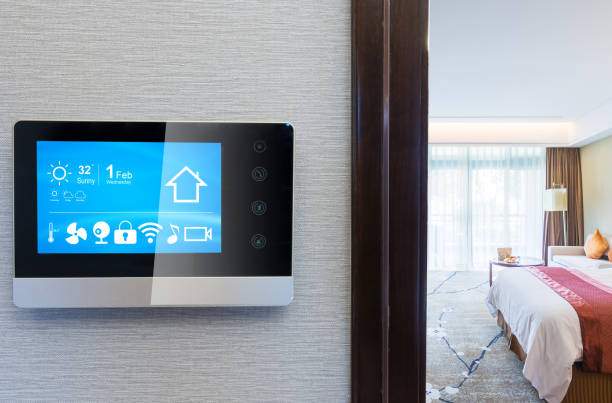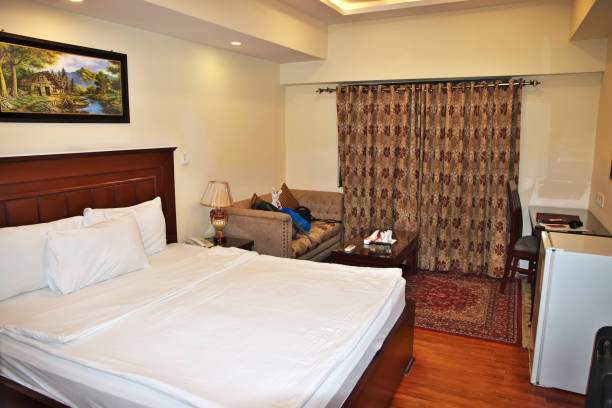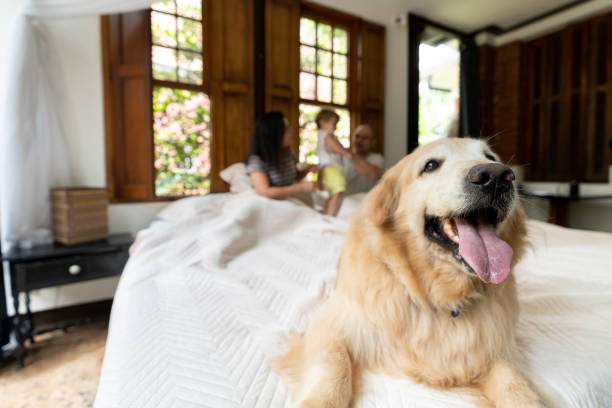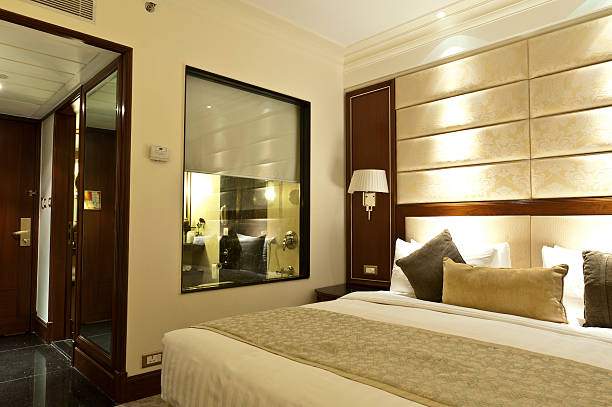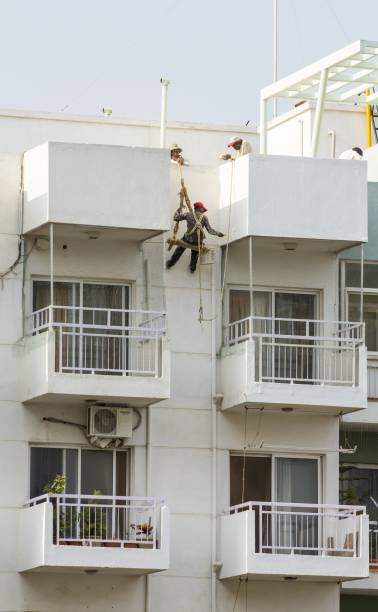Renovating a hotel is a significant undertaking that can greatly enhance its appeal and guest experience. However, the process can be challenging, especially when trying to update the property without disrupting guests. In this blog, we will discuss some tips for hotel renovation that can help you achieve your goals while minimizing guest inconvenience.
Plan Ahead
Planning ahead is crucial when renovating a hotel to ensure a smooth and successful project. Here are some tips to help you plan effectively:
Set Clear Goals: Define what you want to achieve with the renovation. Whether it’s updating the rooms, improving facilities, or enhancing the overall guest experience, having clear goals will guide your renovation plans.
Create a Budget: Determine how much you can realistically spend on the renovation and allocate funds accordingly. Factor in unexpected costs and prioritize renovations that will have the most impact.
Schedule Wisely: Consider the best time to renovate based on your hotel’s occupancy and seasonal trends. Try to schedule renovations during off-peak times to minimize disruption to guests and maximize revenue.
Communicate with Guests: Keep guests informed about the renovation plans through your website, social media, and email newsletters. Manage expectations by providing details about the renovation timeline and any temporary inconveniences.
Hire the Right Professionals: Work with experienced architects, designers, and contractors who understand the unique requirements of hotel renovations. They can help you create a realistic plan and ensure the project stays on track.
Focus on ROI: Prioritize renovations that will provide the highest return on investment, such as upgrading guest rooms, improving energy efficiency, or enhancing amenities that attract guests.
Consider Sustainability: Incorporate sustainable practices and materials into your renovation plans to reduce environmental impact and appeal to eco-conscious travelers.
Plan for Accessibility: Ensure that your renovation plans comply with accessibility standards to accommodate guests with disabilities and improve overall guest satisfaction.
By planning ahead and following these tips, you can successfully renovate your hotel and create a refreshed and inviting space for your guests.
Communicate with Guests
When communicating with guests about hotel renovations, transparency and clarity are key. Here are some tips for effectively communicating with guests:
Announce Early: Inform guests about the renovation project as early as possible. This can be done through your website, social media channels, and email newsletters.
Provide Details: Clearly explain the scope of the renovation, including which areas of the hotel will be affected and the expected timeline for completion. Assure guests that you are committed to minimizing disruption to their stay.
Manage Expectations: Be honest about any inconveniences guests may experience during the renovation, such as noise, dust, or temporary closures of facilities. Offer alternatives or discounts to mitigate these inconveniences.
Highlight Benefits: Emphasize the improvements and enhancements guests can look forward to after the renovation is complete. This could include upgraded rooms, new amenities, or improved services.
Offer Assistance: Provide guests with information on how to contact hotel staff if they have any questions or concerns during their stay. Ensure that staff are prepared to address guest needs related to the renovation.
Update Regularly: Keep guests informed of the progress of the renovation through regular updates on your website and social media. This helps to build anticipation and maintain guest engagement.
Thank Guests for Understanding: Express appreciation to guests for their understanding and patience during the renovation. A simple thank you can go a long way in maintaining positive guest relations.
By communicating effectively with guests about hotel renovations, you can minimize disruptions, manage expectations, and maintain guest satisfaction.
Phased Renovation Approach
A phased renovation approach involves dividing the renovation project into smaller, manageable phases, allowing parts of the hotel to remain operational while work is being carried out in other areas. Here are some key steps to consider when implementing a phased renovation approach:
Assessment and Planning: Conduct a thorough assessment of the hotel’s needs and prioritize renovation areas. Develop a detailed plan that outlines the scope of work for each phase.
Divide the Project: Divide the renovation project into logical phases based on the priority areas identified in the planning stage. Consider factors such as guest traffic flow, operational requirements, and dependencies between different areas.
Schedule and Timeline: Create a realistic timeline for each phase, taking into account factors such as guest occupancy levels, seasonal trends, and availability of resources. Ensure that the timeline allows for sufficient time to complete each phase without compromising quality.
Communication Plan: Develop a communication plan to keep guests, staff, and stakeholders informed about the renovation schedule, progress, and any temporary changes to services or facilities. Use multiple channels such as email, social media, and signage within the hotel.
Minimize Disruption: Implement measures to minimize disruption to guests, such as scheduling noisy work during off-peak hours, providing alternative access routes, and offering amenities or services to compensate for any inconveniences.
Quality Control: Maintain strict quality control throughout the renovation process to ensure that work is completed to the highest standards. Regular inspections and monitoring can help identify and address any issues promptly.
Flexibility: Remain flexible and be prepared to adjust the renovation plan as needed based on unforeseen circumstances or changes in priorities. A phased approach allows for greater flexibility in responding to such changes.
Completion and Evaluation: Once all phases of the renovation are complete, evaluate the overall project to identify lessons learned and areas for improvement. Gather feedback from guests and staff to assess the impact of the renovation on guest satisfaction and operational efficiency.
By following these steps, you can effectively implement a phased renovation approach that minimizes disruptions, maintains guest satisfaction, and ensures the successful completion of your hotel renovation project.
Noise and Dust Control
Noise and dust control are crucial aspects of managing a hotel renovation to minimize disruption to guests and ensure a safe and comfortable environment. Here are some strategies to control noise and dust during a renovation:
Schedule Noisy Work During Off-Peak Hours: Schedule noisy activities such as demolition and construction work during times when guest occupancy is low, such as early morning or late evening.
Use Soundproofing Materials: Install temporary soundproofing materials, such as barriers and curtains, to reduce noise transmission to guest areas.
Communicate with Guests: Inform guests about the renovation schedule and potential noise levels through your website, social media, and signage within the hotel. Provide earplugs or offer alternative accommodations if noise levels are expected to be high.
Use Dust Barriers: Install dust barriers, such as plastic sheeting, to contain dust within the renovation area and prevent it from spreading to guest areas.
Implement Dust Control Measures: Use dust control measures such as wetting down surfaces, using vacuum cleaners with HEPA filters, and using dust suppression products to minimize dust levels.
Seal Off Renovation Areas: Seal off renovation areas from guest areas using temporary walls or barriers to prevent dust and noise from affecting guests.
Regular Cleaning: Implement regular cleaning schedules to remove dust and debris from guest areas and maintain a clean and comfortable environment.
Monitor and Adjust: Regularly monitor noise and dust levels and adjust your mitigation measures as needed to ensure they are effective.
By implementing these strategies, you can effectively control noise and dust during a hotel renovation, minimizing disruption to guests and maintaining a safe and comfortable environment.
Offer Alternative Facilities:
Offering alternative facilities is an excellent way to enhance the guest experience during a hotel renovation. Here are some ideas for providing alternative facilities:
Temporary Dining Area: Set up a temporary dining area or offer vouchers for nearby restaurants to ensure guests have access to meals.
Temporary Fitness Center: Create a temporary fitness center with basic equipment or offer access to a nearby gym.
Shuttle Service: Provide a shuttle service to nearby attractions, shopping areas, or other amenities to compensate for any disruptions caused by the renovation.
Activity or Entertainment Programs: Offer special activities or entertainment programs within the hotel or in nearby locations to keep guests engaged.
Spa Services: Partner with a nearby spa or wellness center to offer spa services to guests during the renovation.
Children’s Play Area: Set up a temporary children’s play area or offer activities for families traveling with children.
Business Center: Provide access to a temporary business center with computers, printers, and other office equipment for guests who need to work remotely.
Lounge Area: Create a comfortable lounge area where guests can relax and socialize while the renovation is ongoing.
Concierge Services: Offer enhanced concierge services to assist guests with making arrangements for activities, dining, and transportation.
Special Offers or Discounts: Provide special offers or discounts on room rates, amenities, or services to compensate for any inconvenience caused by the renovation.
By offering alternative facilities and services, you can ensure that guests continue to enjoy their stay at your hotel despite the renovation work. This can help maintain guest satisfaction and loyalty, ultimately benefiting your hotel in the long run.
Update Rooms in Batches:
Updating rooms in batches is a practical approach to hotel renovation, allowing you to maintain guest occupancy and revenue while improving your property. Here’s how you can effectively update rooms in batches:
Plan and Prioritize: Determine which rooms to renovate first based on factors such as room condition, guest demand, and revenue potential. Create a detailed plan that outlines the renovation schedule for each batch.
Phased Approach: Divide the renovation project into manageable phases, with each phase focusing on updating a specific number of rooms. This allows you to gradually renovate all rooms without disrupting guest stays.
Communication: Inform guests about the renovation schedule and which areas of the hotel will be affected. Provide updates through your website, social media, and email newsletters to manage guest expectations.
Flexible Scheduling: Schedule room renovations during periods of low occupancy to minimize disruption to guests. Consider offering incentives for guests to stay during the renovation, such as discounted rates or complimentary amenities.
Quality Control: Maintain consistent quality standards across all renovated rooms. Conduct regular inspections to ensure that work is completed according to specifications and guest expectations.
Feedback and Adjustments: Gather feedback from guests who stay in renovated rooms to identify areas for improvement. Use this feedback to make adjustments to future batches of room renovations.
Completion and Evaluation: Once all rooms have been renovated, evaluate the overall project to assess its impact on guest satisfaction and revenue. Use this information to inform future renovation plans.
Updating rooms in batches allows you to improve your hotel’s offerings while minimizing disruption to guests. By following these tips, you can successfully renovate your rooms and enhance the overall guest experience at your hotel.
Work with Experienced Contractors:
Working with experienced contractors is essential for the success of any hotel renovation project. Here are some reasons why:
Expertise: Experienced contractors have the knowledge and skills to handle complex renovation projects, ensuring that work is completed to high standards and meets all requirements.
Efficiency: Experienced contractors are familiar with the renovation process and can work efficiently to complete the project on time and within budget.
Quality: Experienced contractors have a track record of delivering high-quality workmanship, ensuring that your hotel renovation meets your expectations and impresses your guests.
Compliance: Experienced contractors are knowledgeable about building codes, regulations, and safety standards, ensuring that your renovation project complies with all legal requirements.
Problem-solving: Experienced contractors are adept at identifying and resolving issues that may arise during the renovation process, minimizing delays and disruptions.
Communication: Experienced contractors have effective communication skills, keeping you informed about the progress of the renovation and addressing any concerns or questions you may have.
Relationships: Experienced contractors have established relationships with suppliers and subcontractors, enabling them to secure the best materials and services for your renovation project.
When selecting a contractor for your hotel renovation, be sure to research their experience, qualifications, and track record. Ask for references and examples of past projects to ensure they are the right fit for your renovation needs.
Quality Control: Top of Form
Quality control is crucial in hotel renovations to ensure that the work meets the required standards and satisfies guests’ expectations. Here are some key aspects of quality control in hotel renovations:
Detailed Specifications: Clearly define the scope of work and specifications for each aspect of the renovation, including materials, finishes, and installation methods.
Regular Inspections: Conduct regular inspections throughout the renovation process to verify that work is being done according to specifications and quality standards.
Quality Assurance Program: Implement a quality assurance program that includes checklists, procedures, and guidelines to ensure consistency and compliance with standards.
Training and Supervision: Provide training for contractors and subcontractors on quality standards and expectations. Assign experienced supervisors to oversee the work and ensure quality control.
Testing and Sampling: Conduct testing and sampling of materials and workmanship to verify compliance with standards and specifications.
Corrective Action: Address any issues or deficiencies promptly through corrective action. Ensure that corrections are made to meet quality standards.
Documentation: Maintain detailed documentation of all aspects of the renovation, including specifications, inspections, testing results, and corrective actions taken.
Feedback and Evaluation: Gather feedback from guests and staff after the renovation to evaluate the quality of the work and identify areas for improvement.
By implementing these quality control measures, you can ensure that your hotel renovation meets the highest standards and provides a positive experience for your guests.
Guest Feedback:
Guest feedback is invaluable in hotel renovations as it provides insights into guest experiences and preferences, helping you make informed decisions to enhance your property. Here’s how you can collect and utilize guest feedback:
Surveys: Conduct surveys to gather feedback from guests about their stay, including their impressions of the renovated areas, any issues they encountered, and suggestions for improvement.
Online Reviews: Monitor online review platforms such as TripAdvisor, Google Reviews, and Booking.com for guest feedback. Respond promptly to reviews, both positive and negative, to show that you value guest input.
Comment Cards: Provide comment cards in guest rooms or at the front desk for guests to share their feedback anonymously.
Social Media: Monitor social media channels for guest feedback and engage with guests to address any concerns or questions they may have.
Focus Groups: Organize focus groups with select guests to gather more detailed feedback about specific aspects of the renovation.
Staff Feedback: Encourage staff to provide feedback based on guest interactions and observations, as they can offer valuable insights into guest experiences.
Data Analysis: Analyze guest feedback to identify trends, common issues, and areas for improvement. Use this information to make informed decisions about future renovations and improvements.
Action Plan: Develop an action plan based on guest feedback, outlining specific steps to address any issues or implement suggestions for improvement.
By actively seeking and utilizing guest feedback, you can ensure that your hotel renovation meets guest expectations and enhances the overall guest experience.
Post-Renovation Celebration:
A post-renovation celebration is a great way to mark the completion of a hotel renovation project and showcase the improvements to guests and staff. Here are some ideas for a memorable post-renovation celebration:
Open House: Host an open house event where guests and the local community can tour the renovated areas and enjoy refreshments and entertainment.
VIP Reception: Host a VIP reception for loyal guests, local dignitaries, and members of the media to showcase the renovations and thank them for their support.
Special Offers: Offer special promotions or packages to guests who book stays during the post-renovation celebration period.
Live Music or Entertainment: Hire live music or entertainment to create a festive atmosphere during the celebration.
Ribbon-Cutting Ceremony: Organize a ribbon-cutting ceremony with key stakeholders, such as hotel management, contractors, and local officials, to officially unveil the renovated areas.
Photo Opportunities: Set up photo booths or backdrops where guests can take pictures to commemorate the occasion.
Giveaways: Provide guests with branded giveaways such as pens, keychains, or tote bags as a token of appreciation for attending the celebration.
Speeches and Presentations: Have hotel management or other key individuals speak about the renovation project, highlighting the improvements and thanking everyone involved.
Food and Beverage Tastings: Offer tastings of new menu items or signature cocktails to showcase the hotel’s culinary offerings.
Interactive Activities: Organize interactive activities such as cooking demonstrations, art exhibits, or wellness workshops to engage guests during the celebration.
A post-renovation celebration not only allows you to showcase your hotel’s improvements but also creates a positive and festive atmosphere that can enhance guest satisfaction and loyalty.
In conclusion, hotel renovation can be a challenging but rewarding process. By planning ahead, communicating effectively with guests, and implementing strategies to minimize disruption, you can update your property while maintaining a positive guest experience.

